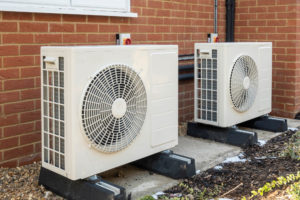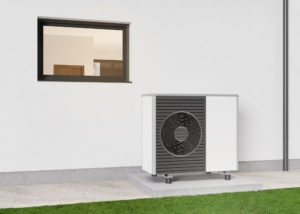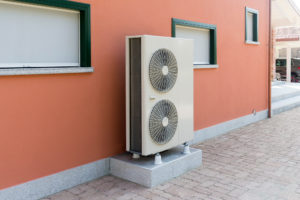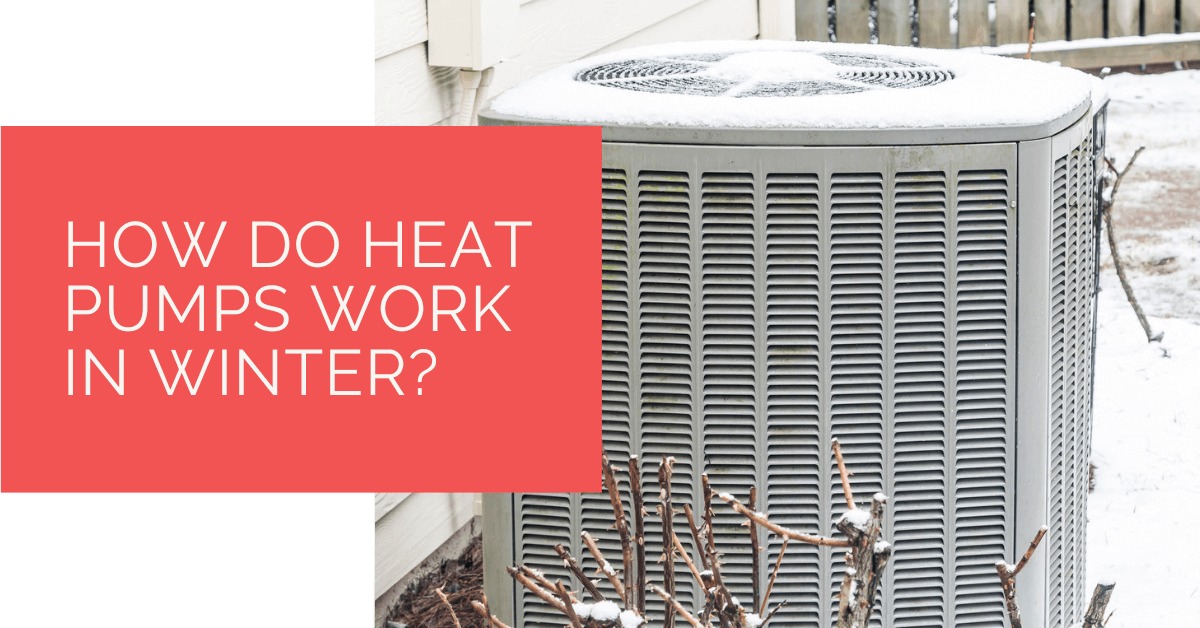Every household aims to reduce electricity costs, prioritizing energy-efficient choices. If you’re considering using an air-source heat pump for your home, you may have a fundamental question: Can this device effectively heat your home during winter?
The straightforward answer is yes. Air source heat pumps are designed to absorb heat from the outdoor air and transfer it into your home, providing reliable heating even in cold winter conditions. This dual functionality, catering to heating and cooling needs, has contributed to the growing popularity of heat pumps in various regions.
To gain a deeper understanding of how heat pumps operate and to explore relevant technical details, this article will delve into their functioning and associated considerations.
Contents
- 1 Key Takeaways
- 2 Working Principle of Heat Pumps
- 3 How Does a Thermal Pump Work in Cold Climate?
- 4 Types of Heat Pumps
- 5 How Do Pumps Generate Heat in Cold Temperatures?
- 6 Heating at Low Temperatures
- 7 Using the Defrost Mode of Heat Pumps
- 8 How to Ensure that Your Heat Pumps Operate Efficiently?
- 9 Additional Benefits of Heat Pump
- 10 Heat Pump Source: Reliable Heating and Cooling Solutions
- 11 In a Nutshell
Key Takeaways
- Heat pumps work in winter by absorbing heat from the outside air and transferring it into your home, making them efficient for heating and cooling.
- There are different types of heat pumps, including air source, ducted, ductless, geothermal, and absorption, each with its working principle and efficiency.
- In extremely cold temperatures, heat pumps may rely on resistance heating, and regular maintenance is crucial to ensure their efficient operation during winter.
Working Principle of Heat Pumps
In simple words, heat pumps have a similar working principle to air conditioners. Here’s what happens in the process during summers:
- A liquid refrigerant circulates in the device
- This refrigerant absorbs heat from your room
- The pump moves warm air outside the house
This way, your heating, ventilation, and air conditioning (HVAC) devices operate efficiently. Hence, you experience comfortable and cool room temperature during summers.
How Does a Thermal Pump Work in Cold Climate?
In winters, heat pumps work like a reverse air conditioner. They warm your home through the following process:
- The refrigerator absorbs heat from the outside air
- It brings the heat inside your house through refrigerant lines
- This way, you receive warm air inside the house
Notably, heat pumps require a small amount of electricity to complete this cycle. The type of heat pump, however, has an influence on this effect.

Types of Heat Pumps
There are three major categories of heat pumps:
- Air source
- Ducted
- Ductless
- Geothermal
- Absorption
Each type has a distinct working principle that can influence the generation of the amount of heat. This section explains each category in brief.
Air Source Heat Pumps
The working principle of this pump is quite simple. These pumps transfer heat from the air in and out of the house.
Ducted air source heat pumps transfer warm air through the arrangement of ducts. On the other hand, ductless heat pumps do not have a separate mechanism for heat exchange. These are single units more compact in size.
Geothermal Heat Pumps
A water or ground source heat pump transfers heat to the ground in summers. On the other hand, these pumps extract heat from a nearby geothermal source to provide warmth in a cold climate.
Generally, these pumps find utility in extreme climates. They are also more highly efficient than their air source counterparts.
Absorption Heat Pumps (AHPs)
These pumps run on sources like natural gas or any other energy medium like propane. They use an ammonia-water absorption cycle to offer the cooling and heating effect.
Generally, they require larger units and have a complex installation requirement. Hence, you need a considerably large household for their inclusion.
Air source heat pumps are popular options if you live in colder climates and have normal residential heating requirements.

How Do Pumps Generate Heat in Cold Temperatures?
In winters, the outside air temperature is already low. Hence, you might be curious about the mechanism behind heat generation.
Heat pumps’ reverse air conditioning effect gathers the available heat even in winters. Notably, the air still contains warmth up to a certain point regardless of the season. Heat pumps thus collect this temperature using the circulating refrigerator.
Reversing valve is a component responsible for switching the pump from cooling to heating. It changes the flow of refrigerant when the outdoor temperature is low. As a result, you can change the thermostat and rely on this mechanism.
Moreover, you do not require an oil or gas boiler for heating and cooling purpose.
Heating at Low Temperatures
Pumps work like a simple heat exchanger by virtue of the warmth of the outside air. However, in extreme climates, the temperature most likely falls below 40°F.
The heat available in the surrounding is not enough to provide warmth to your house. So, what happens in this case?
Well, the heating mechanism requires resistance heating. The initialisation of resistance heating is evident from messages like ‘Emergency Heat’ on your thermostat.
Resistance Heating
In this process, heat generation takes place by passing electrical current to specific conductors. The resistance of these conductors produces thermal energy.
Generally, resistance heating includes coils to heat your home. This system does not have a high level of energy efficiency. It can still be a practical backup when the outdoor temperature significantly falls.
Using the Defrost Mode of Heat Pumps
The remarkably high-utility heat pumps are capable of efficient operation in winters. However, as a user, you should take certain precautions to maintain the performance.
During winters, some regions receive extreme snowfall. This phenomenon leads to the accumulation of ice layers on the heat pump. The device has a dedicated defrost mode to combat this effect. Hence, there is no need to wipe the pump with a cloth soaked mildly with hot water.
In most designs, the defrost cycle stays active for a span of 15 minutes. However, you can notice cool air coming from the ducts in some cases. This effect is an indication of an abnormal or inefficient defrosts mechanism.
So, you should contact a reliable HVAC installer to repair your heat pump.

How to Ensure that Your Heat Pumps Operate Efficiently?
Certain tips can help maintain your heat pump for the longer run. Here are some of the steps that can elevate the performance of your equipment:
- Routine check: Evaluate dirt, dust, debris, snow, or grass clippings on the external components of the heat pump
- Filter replacement: You can replace the filters of your pump every month or as per the HVAC installer’s recommendation
- Practice caution after a power outage: Do not operate or turn ON the heat pump after a power interruption for at least six hours
- Regular audit and maintenance: Hire experienced professionals to conduct a routine inspection at least twice a year
- Keep surrounding area clear of obstacles: Ensure that your heat pump is free from any physical barriers like bushes
By following these suggestions, it is possible to prevent unwanted failures of your heat pump. Hence, you will be ready to combat cold winters with a well-functioning unit.
Additional Benefits of Heat Pump
Heat pumps offer more advantages than the dual utility of cooling and heating. Here are some of the other pros that you can benefit from this equipment.
High Energy Efficiency
These devices utilise a small amount of electricity compared to other sources like electric furnaces. Also, heat pumps do not have to create thermal energy from scratch.
Hence, the energy-efficient feature helps save costs associated with heat generation.
Safety and Durability
A heat pump is simpler to maintain than devices like air conditioners. In addition, these units are safe as the working principle is relatively straightforward.
Equipment like a ground source heat pump can last for a considerable duration of up to 50 years. Hence, these units are durable and provide high value for money.
Heat Pump Source: Reliable Heating and Cooling Solutions
At Heat Pump Source, we take pride in our unwavering commitment to serving the UK with top-tier HVAC solutions. From the efficiency of heat pumps and the cool relief of air conditioning to the warmth of boilers, radiators, and underfloor heating, our dedicated team is always at the forefront of innovation. We understand the unique needs of every household and business, and we strive to provide dependable health and cooling products and services that are tailored just for you. Ensuring your comfort and satisfaction is our utmost priority. Whether you have questions, need guidance, or require support, we’re always here to assist. Please don’t hesitate to contact us; we’re eager to be of service.
In a Nutshell
Thermal pumps heat your home using the reverse air conditioning cycle. The refrigerant absorbs warmth from the outside air and transfers it inside the house.
At very low temperatures, resistance heating helps maintain the warmth inside a building. Hence, these pumps are also suitable if you live in regions with colder climates.
Ensure that you follow simple maintenance tips for elevating the performance of heat pumps. Finally, avail services of an experienced and reliable HVAC installer to choose a suitable type of pump according to your utility.
About the Author
At Heat Pump Source, our articles are the product of a collaborative effort among a team of highly skilled HVAC experts. Our dedicated professionals, hailing from diverse backgrounds in heating, ventilation, air conditioning, and refrigeration, contribute their extensive knowledge and experience to every piece of content. This multidisciplinary approach ensures comprehensive coverage. Our commitment is to deliver authoritative, reliable, and tailored advice to meet the unique needs of every household and business across the UK.

